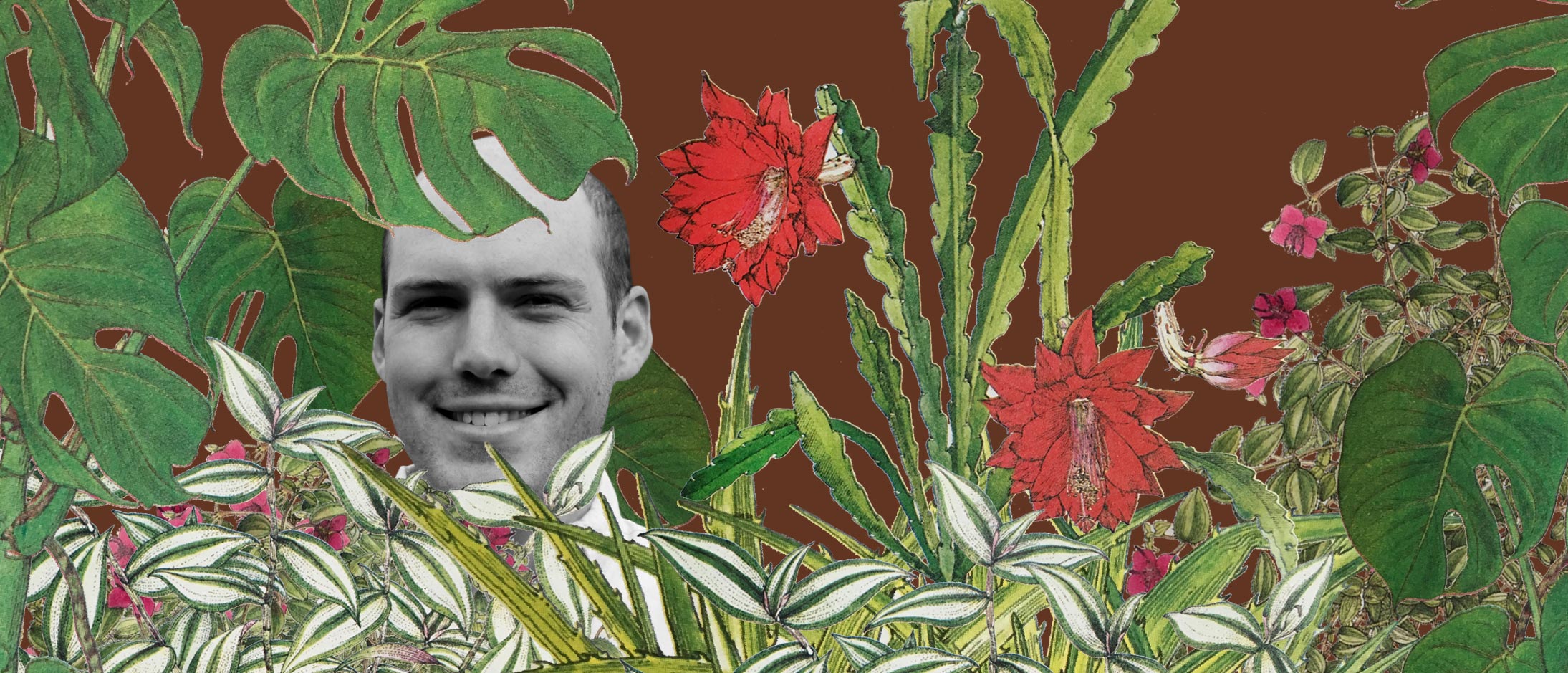Azuma Makoto: International Man of Flowers

- Words by
- Elena Seegers
Let’s give Japanese artist Azuma Makoto the official title he deserves: International Man of Flowers. Makoto was the first to send bonsai and bouquets into the stratosphere and to set giant arrangements adrift on the Hinoba-an Sea. He’s a floral rebel with an entire artistic manifesto based on seeing flowers differently, indeed in places where nature does not traditionally permit them to exist. But if you’re looking for a bouquet at his Tokyo shop, Jardin des Fleurs, you’ve got the wrong man. There’s none for sale there.
Where I did find Makoto and some of his flowers was at Chamber Gallery in New York City. The gallery, nestled on 23rd Street under New York’s Highline in the heart of Chelsea’s art scene, is conceptually and formally very different from those that surround it. Theoretically situated in a wonderful, yet-to-be coined place between art and design, this ‘cabinet of curiosities’ invites a curator to cultivate a collection over the course of a year, rotating and zooming in on different aspects of the curatorial concept.
This year’s curator is multi-disciplinary artist Andrew Zuckerman, who has been investigating the interplay between man and nature during his appointment with the gallery. Zuckerman invited Makoto to design a fascinating Paludarium for the collection, and then invited him back for a solo show in one of the gallery’s “Capsule” exhibitions. And this is when I spoke to the artist, just before his solo show opened last month, about his intriguing new Polyphore pieces and a decade’s worth of floral interrogation of the natural world.
“Since the human race was born, man has been depicting his relationship to nature. The art that man makes about his position within the natural world is like a mirror reflecting the era. Artists in the modern age interpret our constantly evolving relationship to nature in works that undeniably express the now,” says Makoto when we meet. “The pieces in this collection speak to the theme of Human | Nature and reflect a series of man-made interventions in materials, forms, and principles from the natural world.”
This intersection of man and nature—which he is both a part of and separate from – combines to generate new beauty.”
Quasi-Victorian in his fascination with all things living, Makoto archives the ever changing global commercial floral world in an undeniably contemporary fashion. He, along with Shunsuke Shiinoki, his partner in floral crime/co-founder of the flowerless “haute couture” Jardins des Fleurs, photograph the fleeting beauty that surrounds them daily. Shiinoki’s photographs capture flowers at their best moments in life. “Just as I complete my work, he photographs it,” explains Makoto in his 2012 book Encyclopedia of Flowers (Lars Mueller Publishers). “That is the moment of a blossom in full glory, and that is the moment being captured.” He continues: “And yet, much like a man’s life that cannot be summarized by one’s 20s and 30s, a full bloom encapsulates the totality of life, from birth to death.”
The concept of death is also present in the exhibition. The famous Shikii Sculptures of suspended bonsai are, in fact, dead. Where the leaves once were, you’ll now find hand-painted plastic pine needles, photographed in a way that creates an illusion of the tree being alive. “This is a way to give it a second life,” says Makoto. “It is suspended” – both literally and metaphorically.
In the Polypore series, he goes further with the abstraction and elevation of nature. He takes what he qualifies as ‘cancerous like’ growths cut from trees and elevates them to sculptural beauty with the juxtaposition of precious metals. “I see the beauty in these,” he explains. “I pick them from the ground and let them sit outside for two years. I then place them in a dry room for three months. They become hard as rocks.” These exquisite prostheses feel almost extraterrestrial. The mushrooms look soft and fragile and the metal additions look liquid, but the objects are somehow both weighty and solid. It’s reminiscent of Kinsugi – the Japanese art form that treats repair as part of the history of the object, something to highlight rather than disguise.
It’s a similar sentiment that Makoto carries into in his work, which is consistently about finding the beauty.
“I try always to move forward. To look at the past, but take things where they have never been before,” he says. In highlighting what is overtly beautiful, in elevating the ugly, or in reviving the dead, Makoto shows us how theoretical his message is, inviting us to accept that almost nothing is in its natural state. And that’s what makes his work so undeniably fascinating.
—
More examples of Azuma Makoto’s work can be found on his WEBSITE and INSTAGRAM.
The Chamber Gallery’s website is HERE.













